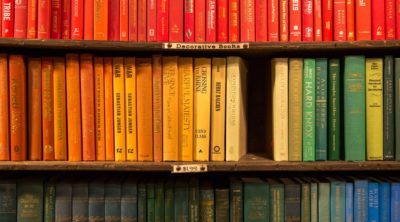
What is assonance? How can I identify it? Where can I find some examples? All these questions that have been plaguing your mind, will be answered in this article.
For all those who have no clue about assonance, let us begin at the beginning. I’m sure you are familiar with the figure of speech called alliteration. If you’re not, then here is the explanation. Alliteration is the repetition of a particular sound in a piece of text, be it poetry or prose, in order to give it a better rhythmic effect. Now, the repetition can be of two types. Let us see the difference between them.
In alliteration, either the vowel (a,e,i,o,u) can be repeated, or the consonant (all other letters of the alphabet) can be repeated. When the sound of the consonant is repeated, it is called consonance. And when the sound of the vowel is repeated, it is called assonance. Let us better understand what is assonance, with some examples given below.
Assonance
The recurrent sound of a vowel or diphthong (combination of vowels) in words of a poem or prose to give it a better poetic effect is assonance. The sound of the vowel needs to be repeated in the same sentence in order for it to qualify as an assonance. Read this example.
I blew the whistle. He threw the ball.
In this text, you will see that the sound ‘oo’ is repeated. However, it is not repeated within the same sentence. This does not qualify it to be an assonance. Now, read this example.
The blue bird flew into the new coop, in the school.
In the above example you can see that the sound ‘oo’ is repeated more than thrice, within the same sentence. And as you read it, you get a sense of rhythm to it. Hence, assonance is used very widely as one of the most basic elements of poetry to make it sound better. You will also notice that many kids’ poems use assonance. This makes it easy for kids to understand and retain the poem in their minds. The thing to keep in mind is that assonance is different from a rhyme, in the sense that you need to enunciate the sound of the vowel or diphthong that is repeated to get the desired effect. An assonance may or may not end with a consonant, but a rhyme most generally ends with a consonant.
Assonance in Poetry
There are plenty of examples of assonance in poetry, for it is one of the most popular practices in poetry to use rhyming words and sentences. Let us now see some examples of assonance in poetry and prose, so that you can comprehend it better.
West Beast East Beast, Dr. Seuss
Upon an island hard to reach,
The East Beast sits upon his beach.
Upon the west beach sits the West Beast.
Each beach beast thinks he’s the best beast.
Which beast is best?…Well, I thought at first,
That the East was best and the West was worst.
Then I looked again from the west to the east
And I liked the beast on the east beach least.
Travel, Edna St. Vincent Millay
All night there isn’t a train goes by,
Though the night is still for sleep and dreaming
But I see its cinders red on the sky,
And hear its engine steaming….
Bells, Edgar Allen Poe
Hear the mellow wedding bells,
Golden bells!
What a world of happiness their harmony foretells!
Through the balmy air of night
How they ring out their delight!
From the molten-golden notes,
And an in tune,
What a liquid ditty floats
To the turtle-dove that listens, while she gloats…
The Feast of Famine, Robert Louis Stevenson
From folk that sat on the terrace and drew out the even long
Sudden crowings of laughter, monotonous drone of song…
Davy Jones’ Door-Bell, Vachel Lindsay
Any sky-bird sings,
Ring, ring!
Any church-chime rings,
Dong ding!
Any cannon says,
Boom bang!
Any whirlwind says,
Whing whang!
The bell-buoy hums and roars,
Ding dong!
And way down deep,
Where fishes throng,
By Davy Jones’ big deep sea door,
Shaking the ocean’s flowery floor,
His door-bell booms
Dong dong,
Dong dong,
Deep, deep down,
Clang boom,
Boom dong.
Just pay attention to each sentence and check out for sounds of vowels that are repeated. Highlight them and those are your assonance examples! It doesn’t get easier than this. Good luck!


